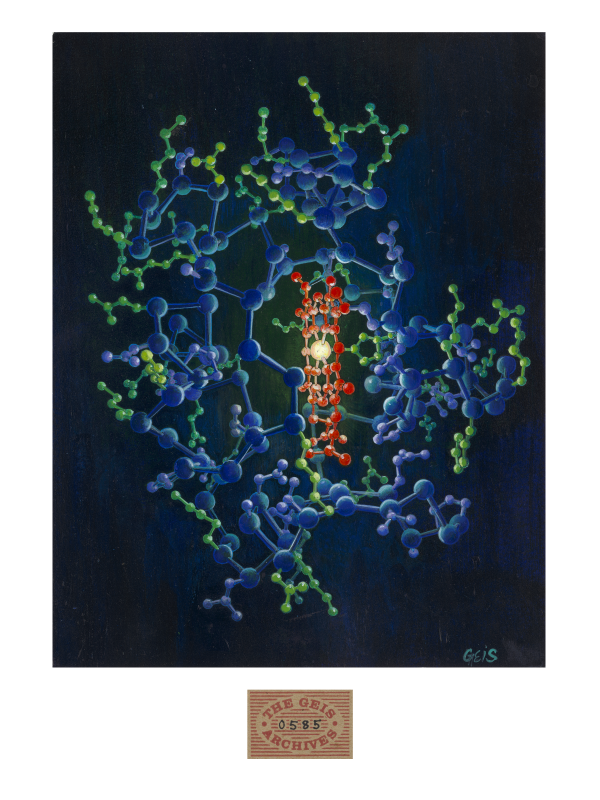Cytochrome c (unbound)

This illustration depicts the protein, Cytochrome c. The red structures represent the hydrophobic amino acids. The green structures represent the positively charged amino acids. The blue structures represent various types of amino acids. In the center of the picture is a luminous yellow sphere which represents the heme group. The heme group is depicted as such because it plays a crucial role in the function of the molecule.
Used with permission from the Howard Hughes Medical Institute (www.hhmi.org). All rights reserved.

Related PDB Entry: 3CYT
Experimental Structure Citation
Takano, T., & Dickerson, R. E. (1980). Redox conformation changes in refined tuna cytochrome c. Proceedings of the National Academy of Sciences of the United States of America, 77(11), 6371–6375.
About Cytochrome c (unbound)
Cytochrome c is a component of the electron transport chain. It is a water soluble molecule that is located on the periphery of the inner mitochondrial membrane. The function of the heme group within the molecule is to transport electrons from complex III to complex IV. Ultimately these electrons combine with oxygen to produce a water molecule. Also the transport of electrons allows for the diffusion of hydrogens into the intermembrane space. This causes an electrochemical gradient and leads to the production of ATP.




